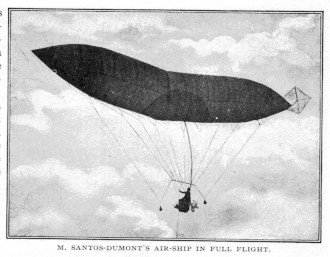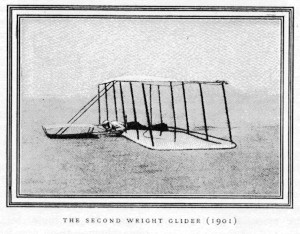A Vision of Flight
Today, a lot of people take 120 years to invent the airplane. The University of Houston's College of Engineering presents this series about the machines that make our civilization run, and the people whose ingenuity created them.
I've just found a trove of early books on flight. And what a view it gives! Let's look: A French manual from a decade after the Wright Brothers' flight sets the stage. 900 pages of the known airplanes, dirigibles, balloons, and people who flew them!
It also gives a time-line for human flight. In 120 years from the Montgolfiers' balloon in 1783 to the Wrights' airplane in 1903, the book lists 92 landmarks of flight. That cold day in Kitty Hawk did not spring full-formed from the head of Zeus. It was the end of a long and purposeful gestation.
As early as 1784 a book by Dr. John Jeffries describes the first English Channel crossing in a balloon. He and his French colleague made it only by dropping ballast and throwing all they had overboard. They finally had to urinate their last drop of disposable weight into the cold forbidding Channel below.
The next century saw furious aerial activity. Here's a wild book by a French physics professor. The year is 1804. He's designed an 80-ton balloon -- a very overblown balloon. He means for 60 scientists to make a great Star Trek of exploration in an airship they cannot even steer.
Down through the 19th century, the books grow more and more detailed and serious. We read how to tie knots in balloon guy ropes, how to generate hydrogen, how to load ballast. Then we read about mounting engines to drive balloons through the air.
Long before the Wrights we start reading aerodynamic theory. Here are equations I learned when I studied fluid flow in graduate school. The mathematics grows formidable while the airships themselves still seem childishly simple.
In 1912 Victor Lougheed wrote about the new airplanes. He was the elder brother of two men who later created the Lockheed Company. His title was Airplane Designing for Amateurs. Lougheed saw that anything as new as flight had to be created by people without the blessing of a profession.
These wonderful old books remind me of something that's easy to forget. No great landmark of invention is the fruit of one great person. It is the fruit of a Zeitgeist.
The Wright Brothers were wise enough to see that. What we seldom hear about the Wrights is how thoroughly they knew this old literature -- this huge record of learning through failure.
Flight had been the great craving of the ages. The Wrights knew they were only one part of a great whole. Kitty Hawk may've been lonely sand. But the Wrights hadn't worked in isolation -- nor, by the way, did they ever claim to.
I'm John Lienhard, at the University of Houston, where we're interested in the way inventive minds work.
(Theme music)
Faroux, Ch., and Bonnet, G., Aéro-Manuel: Répertoire Sportif, Technique et Commercial de l'Aéronautique. Paris: H. Dunod et E. dePinat, 1914.
Loughhead, V., Aeroplane Designing for Amateurs. Chicago: The Reilly & Britton Co., 1912.
Girard, E., and de Rouville, A., Les Ballons Dirigeables: Théorie -- Applications. Paris: Berger-Levrault & Cie., 1907.
Robertson, E.G., La Minerve. Paris: S.V. Degen, 1804.
Eberhardt, C., Theorie und Berechnung von Motor-Luftschiffen. Berlin: M. Krayn, 1912.
Jeffries, J., A Narrative of the Two Aerial Voyages of Doctor Jeffries with Mons. Blanchard; . . .. London: J. Robson, 1786.
Crouch, T.D., A Dream of Wings: Americans and the Airplane. 1875 1905, Washington, D.C.: Smithsonian Institution Press, 1981, 1989. Chapter 5.
Howard, F., Wilbur and Orville: A Biography of the Wright Brothers. New York: Ballantine Books, 1987, Chapter 42.
Siuru, B. and Lockheed, A., Lockheed: A Legacy of Speed. Mechanical Engineering, May 1990, pp. 60-64.
I'm grateful to Nancy Boothe, Head of The Woodson Research Library at Rice University, for pointing out the Benjamin Monroe Anderson Collection on the History of Aeronautics and making it available to me.

Century Magazine, 1896

Century Magazine, 1896